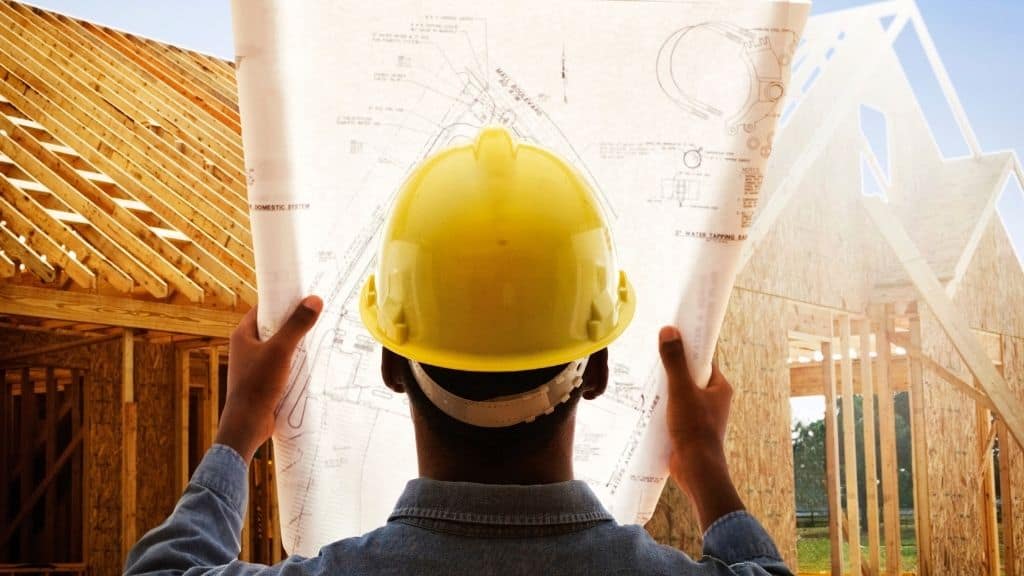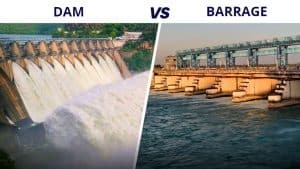
It’s thrilling to start planning your new project, especially after you grasp how the building construction process is carried out. These projects are for industrial, educational, and business reasons, as well as the storage of goods, in addition to residential ones.
From start to completion, the building construction process entails any form of construction that requires a significant amount of time and money. Building construction takes a long time and is arduous work, but the end result is long-term value for us. The building construction process of constructing a residential structure is a methodical activity carried out by professional individuals.
Broadly we can categorize the entire building construction process into two stages, namely:
- Building Construction Process: Stage I (Pre-Construction Stage)
- Building Construction Process: Stage II (Construction Stage)
Each of these stages has multiple points of action within each. So let’s take a look at them.
Building Construction Process: Stage I (Pre-Construction Stage)
This is the initial step in the construction of a structure. This construction includes elements such as:
- Building Plan
- Budget Estimation
- Land Acquisition
- Documentation
Building Plan
The first and most important part of the building construction process is your building plan. When you’re preparing to begin a large-scale project, such as erecting a building, it’s critical to have a strategy in place.
The reason for this is that it assists you in anticipating the characteristics and functionalities of various components of your development process. To get the greatest results, you’ll need a squad of specialists to do this work. In order to organize a successful building construction project you’ll need:
- Architects
- Electricians
- Plumbers
- Civil engineers, and other professionals
Budget Estimation
The construction of a building needs a large amount of material and incurs large expenses. This information is put into the building estimator when the design and structural detailing are completed.
The material amount, number of different items of work, and an abstract sheet that indicates the cost of building construction will all be estimated by the building estimation.
If your funds are restricted, you’ll need to get pre-approval for loans ahead of time, or you could find yourself in a cash crisis.
Land Acquisition
The location of a piece of land is one of the most critical factors to consider before making a purchase. To determine if a piece of land is suitable for your needs, it’s essential to consider the proximity of the property to various amenities and services. For example, you should consider the distance of the land from public transportation options like bus stops, subway stations, or airports. The accessibility to major roads and highways is also an important factor, as it will impact your daily commute and the ease of transportation of goods and services.
It’s also important to consider the proximity of the land to important facilities like schools, parks, and shopping centers. This can have a significant impact on the quality of life of residents and the potential resale value of the property. The presence of these amenities can also play a role in attracting potential buyers or renters in the future.
If you already own a piece of land, then you have already taken a significant step towards finding a suitable location. By having ownership of the land, you have more control over the location and can focus on developing and improving the property to suit your specific needs. This can help ensure that the land is put to its best use and has the potential to increase in value over time.
Documentation
When preparing to start a building construction project, it is crucial to ensure that all proper paperwork and documents are in order to avoid having the building demolished due to a lack of proof of ownership. To prevent this from happening, the following steps should be taken:
- Seek authorization from the appropriate authorities: This is a crucial step that should not be overlooked as failure to obtain the necessary approvals can result in the demolition of the building at a later stage.
- Register the building: Registering the building with the relevant authorities will provide proof of ownership and prevent any legal disputes in the future.
- Obtain a transfer or purchase document: The transfer or purchase document should demonstrate the transfer of ownership from the transferor to the new owner and include all necessary appendices from local legal authorities.
- Land soil test report: A land soil test report will help to determine the suitability of the land for construction and ensure that the building is safe and secure.
- Land survey report: A land survey report will provide an accurate representation of the boundaries of the property and help to avoid any disputes with neighboring properties.
- Architectural drawings: Architectural drawings will provide a clear and detailed representation of the proposed building, including all its dimensions and specifications.
- Certificate of undertaking by a civil engineer: This certificate will provide assurance that the building has been designed and constructed in accordance with all relevant building codes and regulations.
- Structural report: A structural report will provide an assessment of the building’s structural integrity and ensure that it is safe for occupancy.
Building Construction Process: Stage II (Construction Stage)
This is the second stage of the building construction process, where the actual construction commences. This stage includes a number of action points, such as:
- Site Clearing
- Foundation
- Plinth Beam or Slab
- Superstructure
- Brick Masonry Work
- The Lintel
- Roofing Coating
- Electrical and Plumbing
- Exterior and Interior Finishing
- Flooring
- Painting
Site Clearing
Before beginning any construction job, it is vital to clean the area of any undesired grass, boulders, or other debris. If there is a hill-like structure on the ground, it must also be cleansed of extra soil, but if there is a ditch, it must be filled. Site clearance refers to the entire project.
Foundation
The first step in the construction process is to dig the soil to create a solid foundation. This step requires the excavation of the soil to a depth that is suitable for the construction of the foundation, and it must be done with care to ensure that the soil is not disturbed and that the foundation will be solid. The excavation must be carried out in accordance with local building codes and regulations, and any underground utilities must be located and marked before digging commences.
Once the excavation has been completed, the next step is to develop the foundation. This typically involves pouring concrete into the excavation and allowing it to cure for several days before building the foundation walls on top. The foundation walls must be straight, plumb, and level, and they must be checked and re-checked during the construction process to ensure that they are not settling or shifting.
Plinth Beam or Slab
After the foundation has been effectively constructed, further strengthening called a plinth beam and slab is placed atop. The plinth beam and slab are used to reinforce the foundation in order to protect it from moisture and prevent cracks from entering the wall. It will aid in the stability of the foundation in the case of an earthquake.
Superstructure
The superstructure is the section of a structure that is built above the ground surface and performs the structure’s primary function. The columns are built up to the slab level and serve as a framework for future work. To prevent moisture from penetrating the slab and casting, a waterproof layer is used.
Brick Masonry Work
Following the completion of the foundation, beam, and column structure, masonry work with various materials is begun in accordance with the building drawing. A number of materials are used for this purpose, such as:
- Bricks
- Concrete blocks
- Fly ash bricks
A cement mortar mix is used for masonry work. It’s made of cement and sand. During the masonry process, spaces for doors and windows are meticulously built according to the blueprint.
The Lintel
Lintels are strengthened stone beams or cement concrete that support the masonry work above windows and door openings.
Roofing Coating
Next up in the building construction process is roofing coating. The roofing framework is the weight that the lintel sustains. The roof refers to the framework of the house’s highest layer for form covering, weather protection, decorating, and attractiveness.
At this phase, the structure is taking shape, and you can see what dimensions it will have. Various sorts of roofing materials may enhance the aesthetics of your property. Some of them are:
1. Sloping or pitched roof
- Deck Roof
- Gable Roof
- Gambrel Roof
- Hip Roof
- Lean-to-roof
- Mansard or club roof
2. Curved roof
3. Butterfly Roof
4. Dormer Roof
5. M Shaped Roof
Electrical and Plumbing
The switches for lights, fans, and other fixed electrical fixtures will be located on the main switchboard. The other two power switches will be utilised for electrical installation equipment such as computers, cellphones, vacuum cleaners, and other such items.
Plumbing, like electrical wiring, requires meticulous planning before installation. All sewage will be directed to manholes, which will ultimately be directed to the larger septic tank.
Exterior and Interior Finishing
Plastering and painting will begin when the exterior and interior work is done. Waterproofing can also be done to keep humidity from coming up through the wall. External cladding can also be used to improve the house’s elevation.
Inside work can begin after the first wiring has been completed and the interior walls have been primed. Cabinets, shelves, and kitchens may be made out of a number of materials now on the market, including MDF, wood, multi-wood, ACP, stainless steel, plywood, and so on.
Flooring
The construction of the building is nearing completion. Following the completion of the external and interior décor, work on the flooring begins. There are numerous varieties of flooring based on its intended function, cost, and level of polish. Some of the better possibilities are:
- Bamboo
- Carpet
- Cork
- Epoxy flooring
- Granite
- Laminate
- Rubber
- Marble
- Tile (porcelain or ceramic)
- Tile (natural stone)
- Timber
- Wood
- Vinyl
Painting
The final stage of the building construction process is to extend the life of your home while adding colour to give it a gorgeous makeover. Paint is a liquid or solid substance that may be used to colour, protect, and texture surfaces. They are normally kept as a liquid and then applied as a thin layer. To prevent faults, there are a lot of paint firms in India that offer a variety of goods such as acrylics, exterior, and interior coatings, oil coatings, enamel, textures, emulsion, and so on.
Furthermore, it is still good for colouring, protecting, and adding texture to surfaces. When used on-site, it is classified as ornamental, and when used in factories as part of the production process, it is classified as industrial.
Conclusion: Post Building Construction Process
The building construction process is now completed and it’s for handover. You might think that just because the project is built, the task here is over. But it’s really not!
Before the customer moves in, the final checklist, known as a project punch list, must be signed off on. The project punch list consists of:
- Project Information
- Punch Number
- Description
- Location
- Type
- Owner
- Priority
- Date Observed
- Date Expected to Be Complete
- Date Approved
- Date Completed
- Status
- Notes
The final walkthrough inspection ensures that everything was completed properly. The architect then provides a significant completion certificate. As the last government inspection is completed, the government officials get in on the act, and everyone chews their nails. You’re not truly finished until that last government inspection is completed.
It’s time to turn everything off and welcome everyone to your home sweet home!
Building Construction Process FAQs:
1. What is the building construction process?
The building construction process entails any form of construction that requires a significant amount of time and money. Building construction takes a long time and is arduous work, but the end result is a long-term value for us. The building construction process of constructing a residential structure is a methodical activity carried out by professional individuals.
2. What are the pre-construction steps?
Pre-construction is the first step in the building construction process of a structure. This construction includes elements such as:
3. What actions take place in the construction stage?
Construction is the second stage of the building construction process, where the actual construction commences. This stage includes a number of action points, such as:
4. How many types of flooring are available?
There are numerous varieties of flooring based on its intended function, cost, and level of polish. Some of the better possibilities are:






